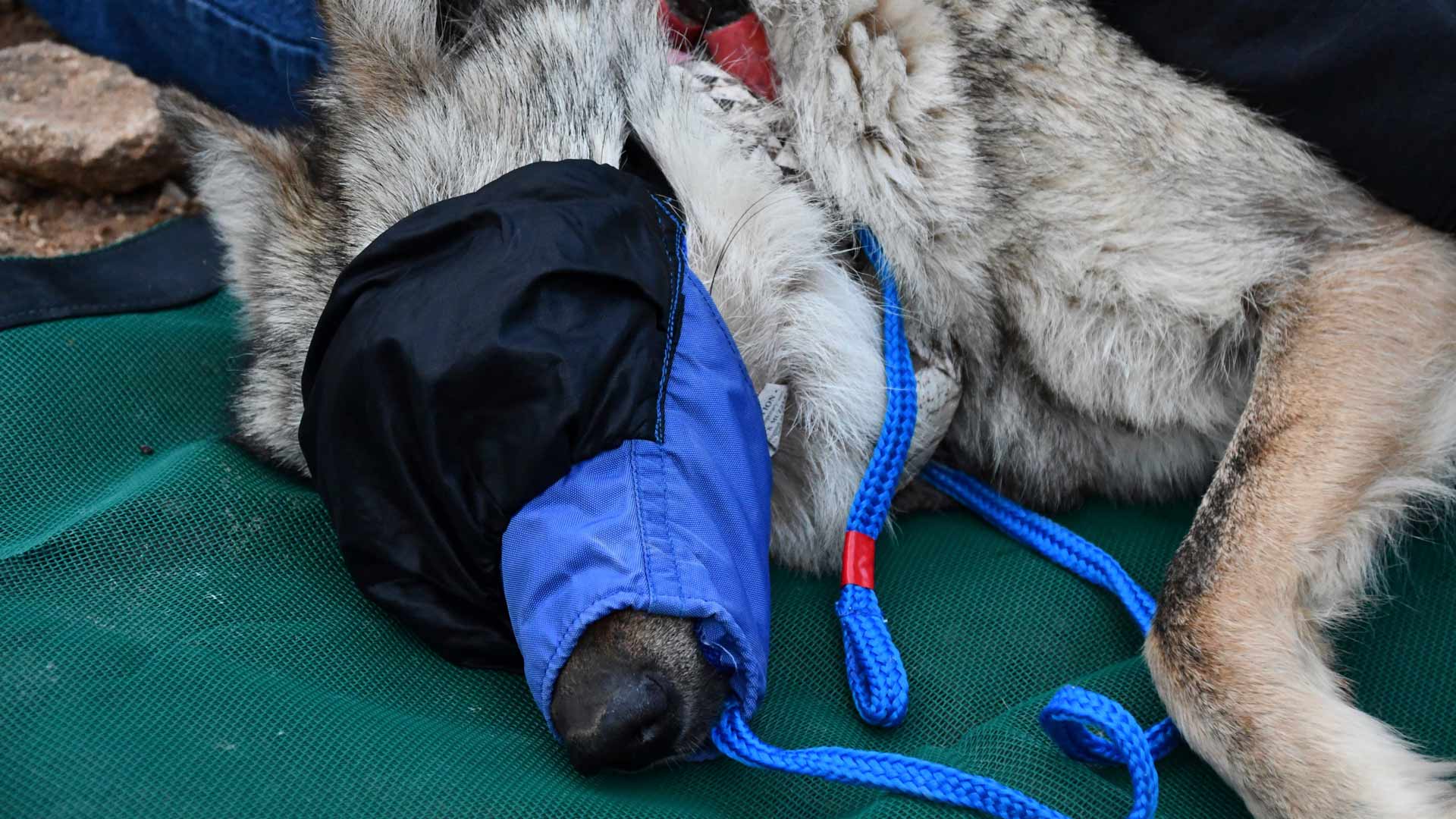 This June 7, 2023, photo provided by the U.S. Fish and Wildlife Service shows a female Mexican gray wolf before she is released back into the wilds of Apache National Forest in eastern Arizona. U.S. Fish and Wildlife Service said the wolf had been found wandering in New Mexico outside a zone created for the recovery of her subspecies.
This June 7, 2023, photo provided by the U.S. Fish and Wildlife Service shows a female Mexican gray wolf before she is released back into the wilds of Apache National Forest in eastern Arizona. U.S. Fish and Wildlife Service said the wolf had been found wandering in New Mexico outside a zone created for the recovery of her subspecies.
It’s been a long journey for one lone Mexican gray wolf — from the forests of southeastern Arizona, across the dusty high desert of central New Mexico to the edge of what is known as the Yellowstone of the Southwest.
Her paws have seen hundreds of miles now over the last five months.
Having reached Valles Caldera National Preserve in northern New Mexico, she has wandered far beyond the boundaries established along the Arizona-New Mexico border for managing the rarest subspecies of gray wolf in North America. The recovery area — spanning tens of thousands of square miles — is home to more than 240 of the endangered predators.
Federal wildlife managers have confirmed to The Associated Press they have no immediate plans for capturing the lone female wolf nicknamed Asha. But they will continue tracking her movements.
Known to biologists by her formal name of F2754, the wolf is outfitted with a GPS collar. Data collected since her release in June in the Apache National Forest in Arizona shows she has traversed more than 650 miles (1,046 kilometers).
That includes about 145 miles (233 kilometers) since crossing Interstate 40 — a major cross-country thoroughfare that marks the northern boundary of the wolf recovery area.
From late October into early November, she was traveling about 13 miles (21 kilometers) a day. Then she began slowing down as she ventured into and out of the Valles Caldera preserve — an area that includes thick forests, vast meadows and some of New Mexico's most famous elk herds. It's also an area held sacred by Native American tribes in the region.
It is hunting season, and wolf recovery experts say it's likely F2754 is feeding on elk carcasses. Small game like rabbits is another possibility since she's without a pack to help her hunt.
Environmentalists have been pushing federal managers to let the wolf be, suggesting that she's heading north toward Colorado in search of a mate. They also pointed out that previous efforts to relocate her were unsuccessful following her first attempt to head northward last winter.
Nearly two dozen environmental groups sent a letter to state and federal officials Nov. 6, saying the wolf's movements are evidence that the recovery boundaries are insufficient to meet the needs of the expanding population.
Ranchers in New Mexico and Arizona who have long complained that wolves are responsible for dozens of livestock deaths every year are concerned about any expansion of the wolves’ range.
It has been 25 years since Mexican gray wolves were first reintroduced into the Southwestern U.S. Despite many fits and starts, federal wildlife managers for the last seven years have seen the numbers trend upward, with last year marking the most Mexican gray wolves documented in Arizona and New Mexico since the start of the program.
The wolf recovery team also counted more breeding pairs and pups last winter than in any year since reintroductions began.
The effort to return the predators to their historic range has been the source of numerous legal challenges over the years by both environmentalists and ranching groups. The latest cases pending in federal court focus on the rules governing wolf recovery, namely the federal regulation that requires the Fish and Wildlife Service to remove all Mexican wolves north of Interstate 40, even in cases where the wolf causes no inconvenience or loss.
If federal officials were to eventually recapture F2754, she would be placed into captivity and paired with another wolf in the hopes that they have pups. Then the family could be released back into the wild the following spring or summer.
Until then, all eyes will be watching the pings from her GPS collar.

By submitting your comments, you hereby give AZPM the right to post your comments and potentially use them in any other form of media operated by this institution.